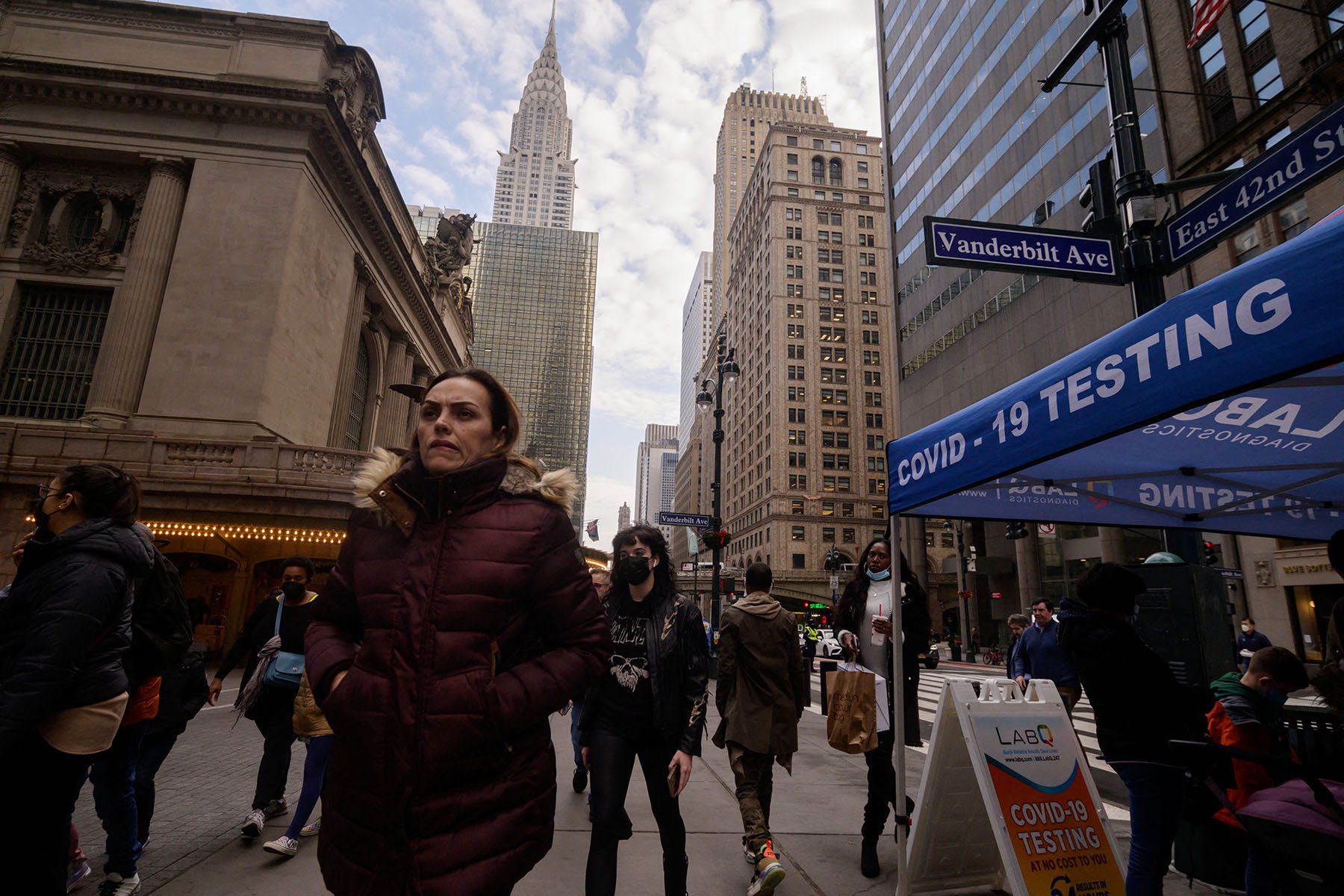If the economic landscape of the first year of the pandemic was defined by the women leaving the labor force, the second year was marked by just the opposite. Nearly a million women — almost twice the number of men — returned to work in 2021, despite what was often a shaky year of recovery.
The largest gains went to those who lost the most in 2020: Latinas and Black women. Those were the groups most likely to be working in people-facing jobs when the pandemic began, particularly in hospitality and health care. Between February and April 2020 alone, 1.1 million Latinas and 754,000 Black women were out of work.
From December 2020 toDecember 2021, some 400,000 Latinas have rejoined the workforce, according to new data released by the Bureau of Labor Statistics on Friday. Another 337,000 Black women also returned, as well as 284,000 Asian women and 227,000 White women.
The unemployment rate for Latinas, especially, dropped the most of any group: From 9.1 percent at the end of 2020 to 4.9 percent at the end of 2021.
Overall, women ended 2021 at the highest rate of labor force participation since March 2020, the first month of the pandemic, at 57.8 percent. Of all the net jobs the economy added in the past year, 3.3 million went to women and 3.1 million went to men. (BLS does not collect data on nonbinary people, and does not have monthly data on Native Americans, Native Hawaiians and Pacific Islanders.)
“People are coming back — and especially women,” said Lauren Bauer, a fellow in economic studies at the Brookings Institution. “The combination of schools consistently opening and their kids being able to be vaccinated, they have been driving the labor force participation and employment recovery for the past several months.”
Caregiving responsibilities, which disproportionately fall on women, have also been a driver of women’s employment. Virtual learning and school closures decreased in 2021, helping to open a path toward employment stability.
“When children have a safe and reliable place to be, moms are going back to work,” Bauer said. “The key story for the coming year is to make that continue to be true for everyone’s sake.”
It’s a trend that will have to continue: As of the end of last year, there are still 1.1 million fewer women in the workforce than there was before the pandemic began compared to a million fewer men.
Black women, for whom the recovery has been especially wobbly, continue to struggle. Although their unemployment rate has dropped, the change was the smallest of any group — 8.5 percent in December 2020 and 6.2 percent in December 2021 — and remains the highest for any group of women. Black women’s unemployment rate at the end of last year was twice the rate for White women.
Black women have also been leaving the labor force in large numbers. In November, such an exodus caused the unemployment rate to drop, but it was for what economists call “bad” reasons — it was lower simply because there was a much smaller number of people to count. Economists questioned then whether that figure was a blip that was concealing a negative trend, and Friday’s new data confirmed that it was: The unemployment rate for Black women shot back up from 4.9 percent in November to 6.2 percent in December, the only group that saw such an increase.
That is where the volatility of the recovery can be seen. Workers who are concentrated in fields that have been losing jobs or adding jobs at a slower clip have been affected the most. Hospitality added 53,000 jobs in December, but all those gains went to men. Retail lost 2,100 jobs — all jobs held by women. And child care lost 3,700 jobs, 2,200 of those held by women.
Still, there is some cause for optimism.
The labor force is changing rapidly, with employees finding jobs that are better suited for them at higher pay, and women opting to start businesses of their own. According to an analysis by LinkedIn, the number of businesses owned by women grew by 27 percent between July 2020 and July 2021. For men and nonbinary people it was 17 percent. The number of self-employed women is also up 4.3 percent from 2019 to 2021, while it was down 1 percent for men in that period, according to a Pew Research analysis that did not collect data on nonbinary people.
The number of people quitting their jobs hit an all-time high. A record 4.5 million people quit their jobs in November, while 6.7 million people were hired, and, crucially, the number of hires was higher than quits in every major industry — evidence that people are quitting and moving into better positions, rather than leaving the workforce.
“Below the surface we are seeing some pretty positive indications,” Bauer said, “women coming back and staying back, self-employed numbers going up, wage gains at the bottom of the income distribution and all of that predicated on ever increasing vaccination rates and the hope that the economic indicators and the public health indicators begin to converge.”
But for workers in the most vulnerable industries, conditions have reached critical levels, said April Verrett, the president of SEIU Local 2015, the largest union of home care and nursing workers in California representing 400,000 people, a workforce that is predominantly women of color.
“We have a workforce of caregivers who simply cannot afford to do this work any longer, either because of the toll that it is taking on them and their families, personally, or that they just can no longer support their families on what they're earning,” Verrett said.
And even though some employers are responding with higher pay, the problem runs deeper, with workers reporting that they are still not getting appropriate protective equipment at nursing homes, for example, or facing stagnant growth opportunities.
The issue, Verrett said, is that home care positions are still critical, particularly as the new coronavirus wave unfurls. Improving the quality of those positions will not only keep workers in an industry that is seeing widespread shortages, but will also elevate women of color more broadly.
“If we invest in the millions of women of color that do care work in this country, both inside of facilities and home care, we can create a new middle class that is centered around women of color and their families,” Verrett said. “That's the type of transformation we need to change lives and material living conditions for communities of color across our country.”






